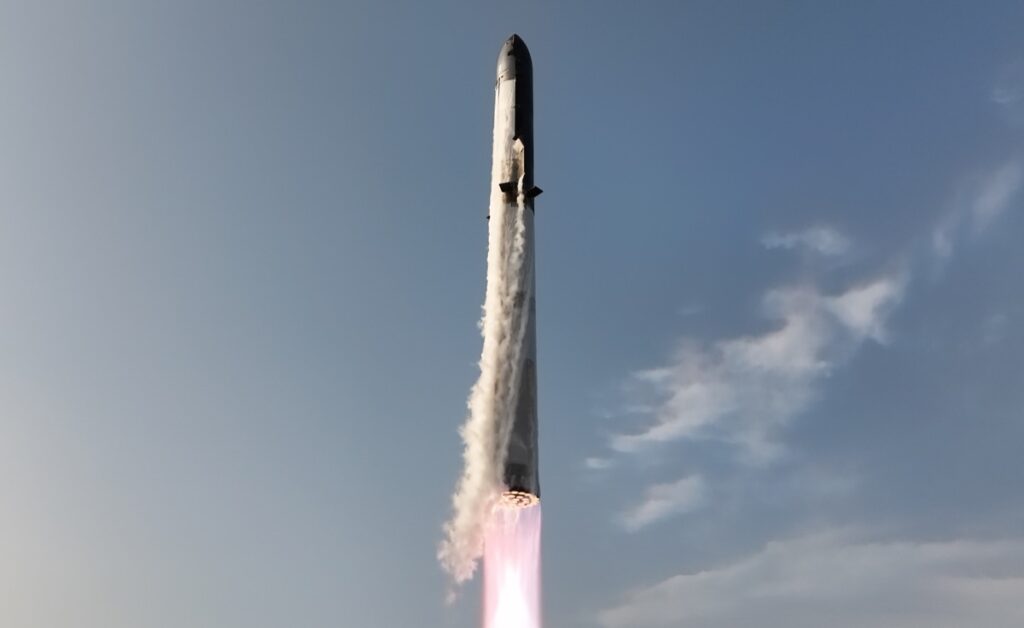SpaceX made history once again with its ninth Starship test flight on May 27, launching from Starbase, Texas at 6:36 p.m. CT. This test flight marked several significant milestones in the company’s mission to develop a fully reusable spacecraft, despite ultimately losing both stages during the flight.
The Super Heavy booster, which had previously flown during the seventh test in January, made history by becoming the first booster to fly twice in the Starship program. It completed a full ascent burn using all 33 Raptor engines and successfully separated from the Starship upper stage using a hot-staging maneuver. SpaceX noted that the Super Heavy booster performed the first deterministic flip followed by its boostback burn during this process.
As the booster descended towards its splashdown zone in the Gulf of Mexico, it tested a new flight profile aimed at gathering real-world data to improve performance on future Super Heavy vehicles. SpaceX explained that by increasing the amount of atmospheric drag on the vehicle, a higher angle of attack results in a slower descent speed, requiring less propellant for the initial landing burn. However, contact with the booster was lost just after the landing burn began, approximately six minutes into the flight, due to a rapid unscheduled disassembly.
Meanwhile, the upper stage continued into space and ignited all six Raptor engines for a full-duration burn. These engines had been modified based on findings from the previous test, with SpaceX implementing additional preload on key joints, a new nitrogen purge system, and improvements to the propellant drain system.
In orbit, the mission planned to open the payload bay and release eight Starlink simulator satellites, followed by a single-engine relight. However, the payload bay door was unable to open, and a control issue prevented the engine restart, causing Starship to not get into the proper position for reentry. The vehicle went into an automated safing process before contact was lost about 46 minutes into the flight, with all debris expected to fall within a pre-designated zone in the Indian Ocean.
Despite the challenges faced during the test flight, SpaceX hailed it as a major milestone for reuse with the first flight-proven Super Heavy booster. The company emphasized that developmental testing is unpredictable but every lesson learned marks progress towards Starship’s goal of enabling life to become multiplanetary. SpaceX remains dedicated to pushing the boundaries of space exploration and advancing the technology needed for future missions beyond Earth’s orbit.

